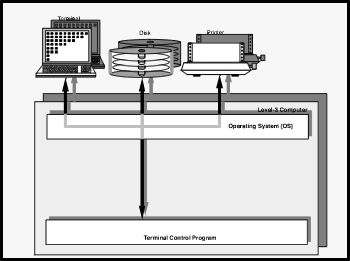
Landside Information Control
Computer Software
Custom software development is required for all parts of the Level-3 system that are not standardized. Complex, one of a kind, systems tend to be very expensive. Recently, a contract for a custom marine terminal computer system was awarded for USD$ 2.5 million [reference 13]. This is a cost that can be paid by only the largest marine terminals in the world. Even these terminals are finding the cost difficult to justify. The only alternative for the terminal operator that cannot afford these costs is to obtain a packaged program where the software house has absorbed the development cost of a generic marine terminal computer package. Several companies offer such a package [reference 14-15]. In this case, the development costs incurred by the software house can be spread over all of the systems sold.
Expected cost
Although a generic package will be relatively inexpensive, the cost of packaged terminal control software may never achieve the low levels traditional in the microcomputer market. The container terminal market only has about 600 marine terminals. If the true software development cost for a generic package is twice the most recently awarded custom contract, then a software development house would spend USD$ 5 million. If the computer program achieved 15% market penetration, then there would be 90 customers using the program worldwide. To just recover development costs, the program would cost around USD$ 50,000. There would be additional costs which would vary depending on the amount of customization required and the amount of profit commensurate with the development risk.
The usual problem with a generic system is that it doesn't exactly match the marine terminal's needs and since it is generalized it requires a larger and consequently more expensive computer. With the availability of inexpensive, powerful computers and networking capabilities; it is now possible to use standard software to produce much more flexible systems. This allows a packaged program that can be easily tailored to a specific marine terminal. Newer software techniques are available to encourage more customization of the program by the marine terminal itself without the support of a programmer. For a program to have these features, it must be structured correctly. The features that support this flexibility are:
- Adherence to computer industry standards
- Modular software structure
- Database driven architecture
Adherence to standards
The reason to look for software using as many computer industry standard modules as possible is simple. Industry standard modules have a broader market than just the marine industry. The market for standard modules consist of millions of computer systems. A market this size attracts formidable competitors, keeping the cost low for these modules. Competition is so fierce that modules are constantly and routinely improved. A marine terminal software supplier with even 100% of the marine market, 600 systems, cannot provide these economies of scale. The oldest software trick is to supply a custom module where a standard one will work, then the customer is locked in to the software supplier. There are a great many aspects of computer software that are available for standardization including:
- The Computer Operating System
- The Programming Language
- The Database System
- Communications between Automation Levels
The Operating System
The operating system program on a computer is an important service center running on the machine (see Figure 4). If a program needs to print a line on a printer or obtain information off of the computer disk, a message is sent to the operating system to request the service. Exactly how the service is carried out, the program requesting the service does not know or care. In order to standardize the operating system, the tasks that the operating system performs and the messages that must be sent to request a task must be specified.